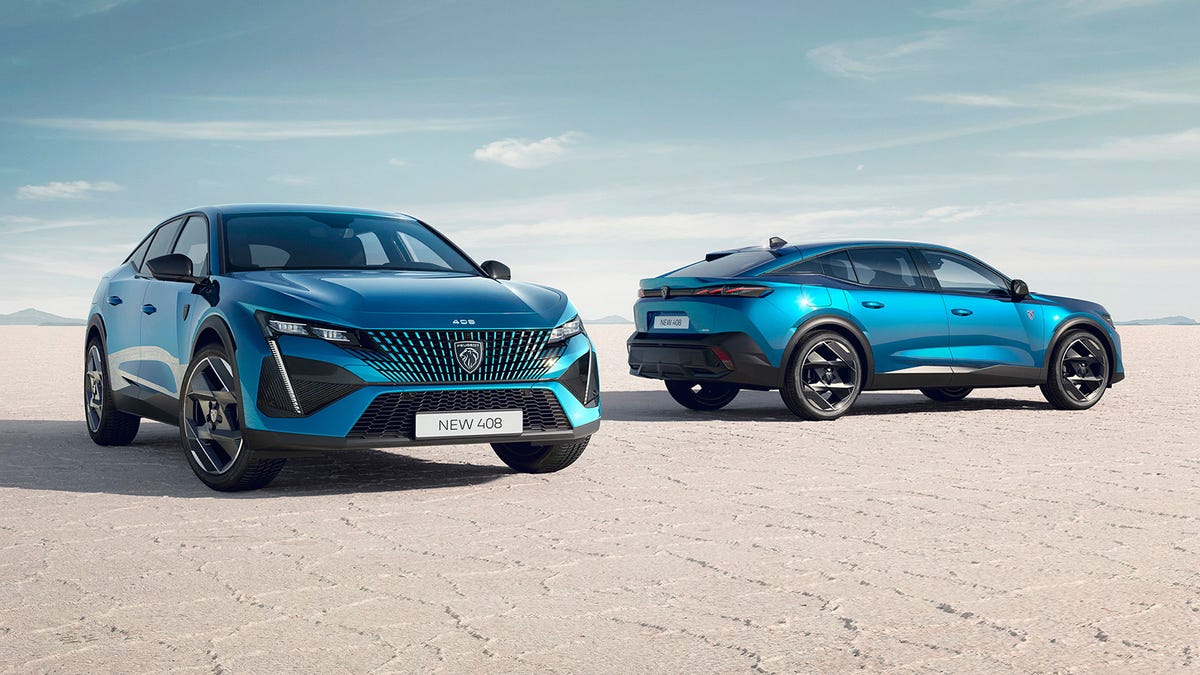The Peugeot 408 Makes the High-Riding Fastback Gimmick Work

The 408 wears its name on its hood, which is very unusual. It also has a brand crest just below the A piillar, like a Ferrari.Image: Stellantis
Peugeot has a 208, 308 and 508. If automakers have taught us anything, it’s that gaps in numerical naming conventions will inevitably always be filled. It’s with that in mind that I present to you the newest member of the French automaker’s range: the 408.
If you ask Peugeot, it’ll tell you the 408 stands out for its “dynamic fastback silhouette” and “feline stance,” words that make me gag a little. Nevertheless, even if the world didn’t necessarily need another high-riding family sedan with a coupe roofline, the 408 happens to be a pretty sharp-looking one. It’s due to arrive in Europe early next year, before eventually making its way to China. They already have a 408 over there, though it looks quite different.
In another universe, the 408, built on Stellantis’ EMP2 or STLA Medium architecture, would have made the hop, skip and jump to our shores. There’s a very good chance it still might, of course, with different styling and a different badge. But the merger between the PSA Group and FCA that created Stellantis also squashed the plan to re-introduce Peugeot to the States, because FCA was already deeply entrenched here to begin with.
Image: Stellantis
The 408 will launch with three powertrains: two hybrids, producing a total of 180 and 225 horsepower, as well as one internal combustion-only version with 130 horsepower. A battery-electric version will eventually follow, according to the brand.
Those numbers aren’t especially unordinary or impressive, but I’ll give you one that is: 3,077 pounds. That’s how much the non-hybrid 408 weighs, owing to the attention Peugeot’s supposedly paid to weight reduction. While that’s pretty respectable for a car like this, and squarely competitive with a number of compact sedans, the hybrids add quite a bit of mass; the most powerful one tips the scales at 3,761 pounds. Of course, you can expect the pure-electric 408 to trounce that sum.
Image: Stellantis
Inside I’m relatively smitten by the 408’s dash, which isn’t exactly pretty but does strike as unique with its geometric themes. The infotainment display has a “folded” orientation to it — it’s probably just two discrete panels — with software controls tilted slightly upward, to make them a little less awkward to touch. That’s a good idea. These buttons are also pretty large, and because they have an entire strip of screen unto themselves, they should be moderately more convenient to interact with than software buttons typically are.
It’s too early to say which future Dodge, Jeep or Alfa Romeo products might serve as our North American counterpart for the 408. The Dodge Hornet and Alfa Tonale will be built on a long-wheelbase version of FCA’s old Small Wide 4×4 platform — the predecessor to EMP2 — just like the Jeep Compass. We’ll have to wait a little longer, then, to see how these new bones will be repurposed by the Chrysler side of the family. I imagine they’ll look much more pissed off.



